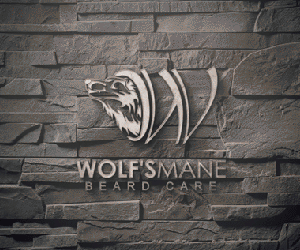By Aaron Robinson – Editor
 Q. When did you realize that you had the gift or calling to produce such amazing work?
Q. When did you realize that you had the gift or calling to produce such amazing work?
A. Growing up, I tried various forms of expression; however I was not good at acting, dance, or playing the violin. I doodled in notebooks at every chance and decided to focus on visual arts in high school. I soon realized that within visual arts, there’s no limit to the amount of media I can use to create. I fell in love with computer graphics, ceramics, painting and drawing classes. Music and performance still made its way into my work. I made videos documenting my process. It’s not really about producing amazing artwork; it’s about developing a skill. I’m not sure if my work is amazing, but I realized that it’s a safe enough world for bad ideas, and I enjoy being able to put them out there.
Q. What was your inspiration to creating the Nelson Mandela Pieces?
A. My artworks are something like public diary entries; each installation reflects upon an evolving story of who we are as people. As a tribute to Mandela’s powerful spirit and enormous impact on the world, I wanted to reflect on where we are geopolitically – due in part to his leadership – and document how grateful I am to have witnessed a man like him in my lifetime. In the spirit of gratitude the drawings took on a celebratory and vibrant energy.
Q. As an artist, what type of subject matter, themes or medium do you like to focus on the most?
A. Themes present in my art range from: genealogical dementia, loss, character-encounters, desire, and the body. I try to use media that relates to the context of each piece, for example- a sculpture about an abandoned home might include plywood. Creating is my relentless effort to explore sources of anxiety, solve problems, share memories, as well as provide evidence for narratives that address social changes, environmental deprivation, and technological advances.
 Q. Your pieces seem to have great meaning, capturing remarkable moments. What piece would you say has been your most valuable treasure and why?
Q. Your pieces seem to have great meaning, capturing remarkable moments. What piece would you say has been your most valuable treasure and why?
A. I usually end up treasuring projects from the first time learning a new medium. I have a sculpture made of metal rods that were wielded together haphazardly; it looks like a mini jungle gym. It’s playful, and I love it. I bring to my work the same exploratory nature I had in my youth, when I tried a variety of creative disciplines. When I was younger, this was just a consequence of being ravenous for a means of expression. But as I mature, I am increasingly curious about the relationship of content and form. How does one piece of material help craft a stronger narrative that another piece does not? What does it mean to make art from Gorilla Glue and how does that medium affect a viewer’s conversation with the piece? I experiment with traditional materials, like paint, wood, etc., as well as nontraditional materials: pasta, glue, and hair. Of course, I do have a few unsuccessful pieces from my introduction to a new material. It’s bound to happen as you’re testing the material’s limits and strengths. I don’t know, maybe I’ll do something with all of these one day.
Q. What do you believe are some of your challenges when it comes to your artistry, and how do you overcome them?
A. My biggest challenge is finding a home for my artworks and reaching people like my neighbors who would rather buy decorations from chain stores like Ikea and Walmart. I wonder why so many choose to purchase bowls of fake lemons and reproduced canvas prints. Is it a question of affordability? I can understand that of course, but I would urge people to seek out student work and that of emerging artists. These artists tend to have lower prices that may increase in worth over time; but that reproduced canvas print never will.
Maybe people actually just want decoration more than they want art? Given that so many public schools are cutting their arts programs, it’s not hard to imagine that some people simply do not find the social value in art. Or, maybe it is more accurate to say that in a consumerist society, social value is not as highly prized as use value.
Certainly, decoration is a lot less threatening than art. The ambiguities and confrontational nature of modern art has the potential to spark difficult conversations that perhaps some people are not ready to have. We all have thoughts we’d rather avoid sharing with our neighbors, but that’s the whole point of art, to start a dialog and advance culture.
I’m curious as to what will drive consumers to make more considerate and daring choices moving forward. Right now, one solution I’ve found is to invest my time in public art projects, like murals, that involve the community in the production. If nothing else, they might become (if they’re not already) more familiar with the language of thinking about and receiving art, which can make them more likely to visit a museum and seek to integrate artistic experiences in their lives. It sounds sort of wishful, I know, but I do believe there is importance in community-integrated arts practice, especially when the spaces in which people learn to interact with art are diminishing daily.
Q. As a young artist, what advice would you give to up and coming artists who have a difficult time finding their place in the art world?
A. Being an artist the beginning of your career is the most exciting place to be right now because you have so many tools at your disposal from which you can make and share your work. From the art collector’s perspective, it’s more affordable to invest emerging artists and it’s an adventure to follow young artist over the course of their career. To up and coming artists: I would say optimize the power of social media to get your name out there! There are a number of web platforms that are designed specifically to promote emerging artists and make their work more accessible. Check these out and use them to your advantage.
Q. Would you like to add anything in closing?
A. I appreciate your interest in my work and this opportunity to reflect. I welcome more of exactly this kind of thoughtful dialogue with your readers. Don’t hesitate to contact me via http://nilelivingston.com/ or @nilelivingston on Twitter, Facebook, and Instagram
Last modified: May 15, 2023



















